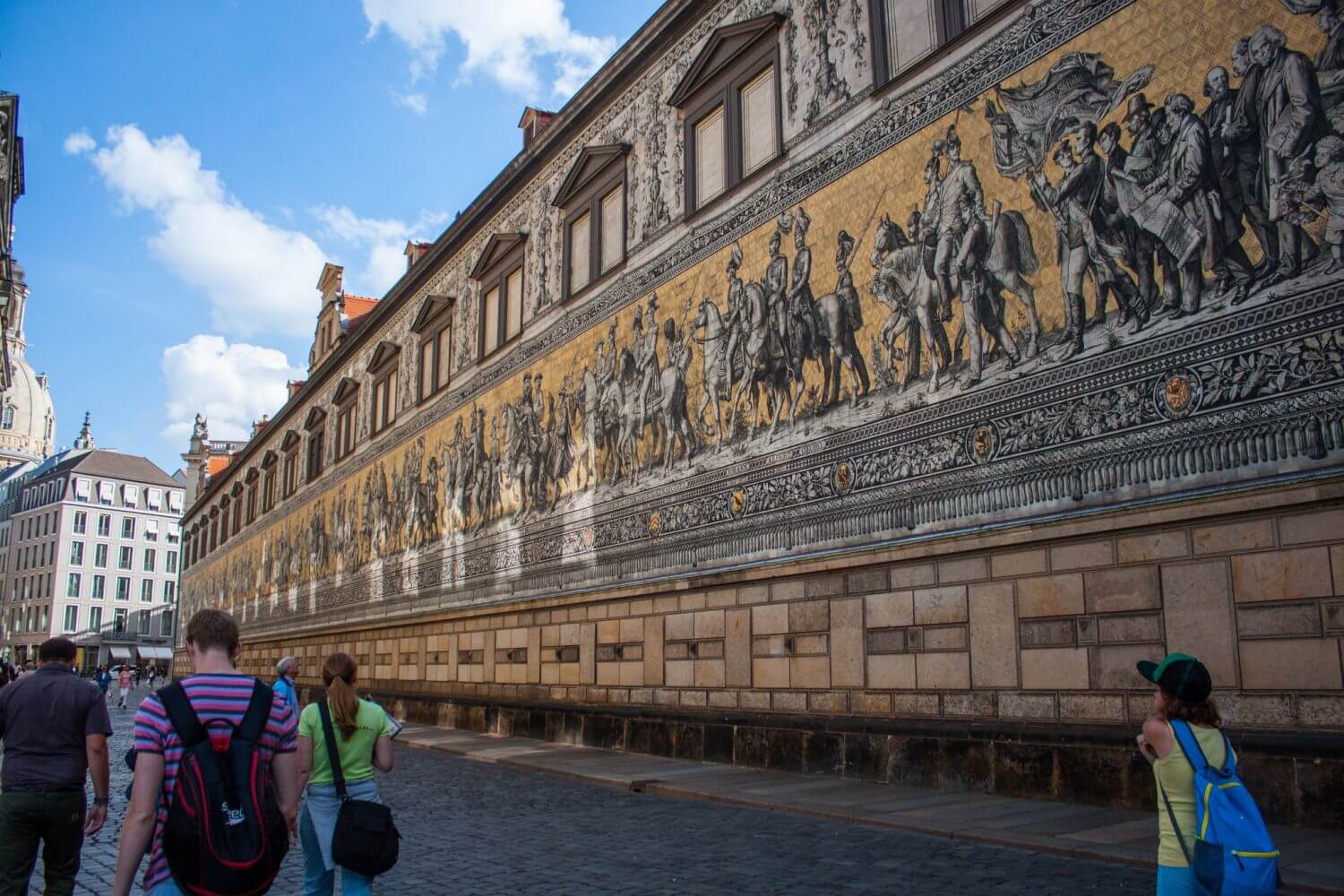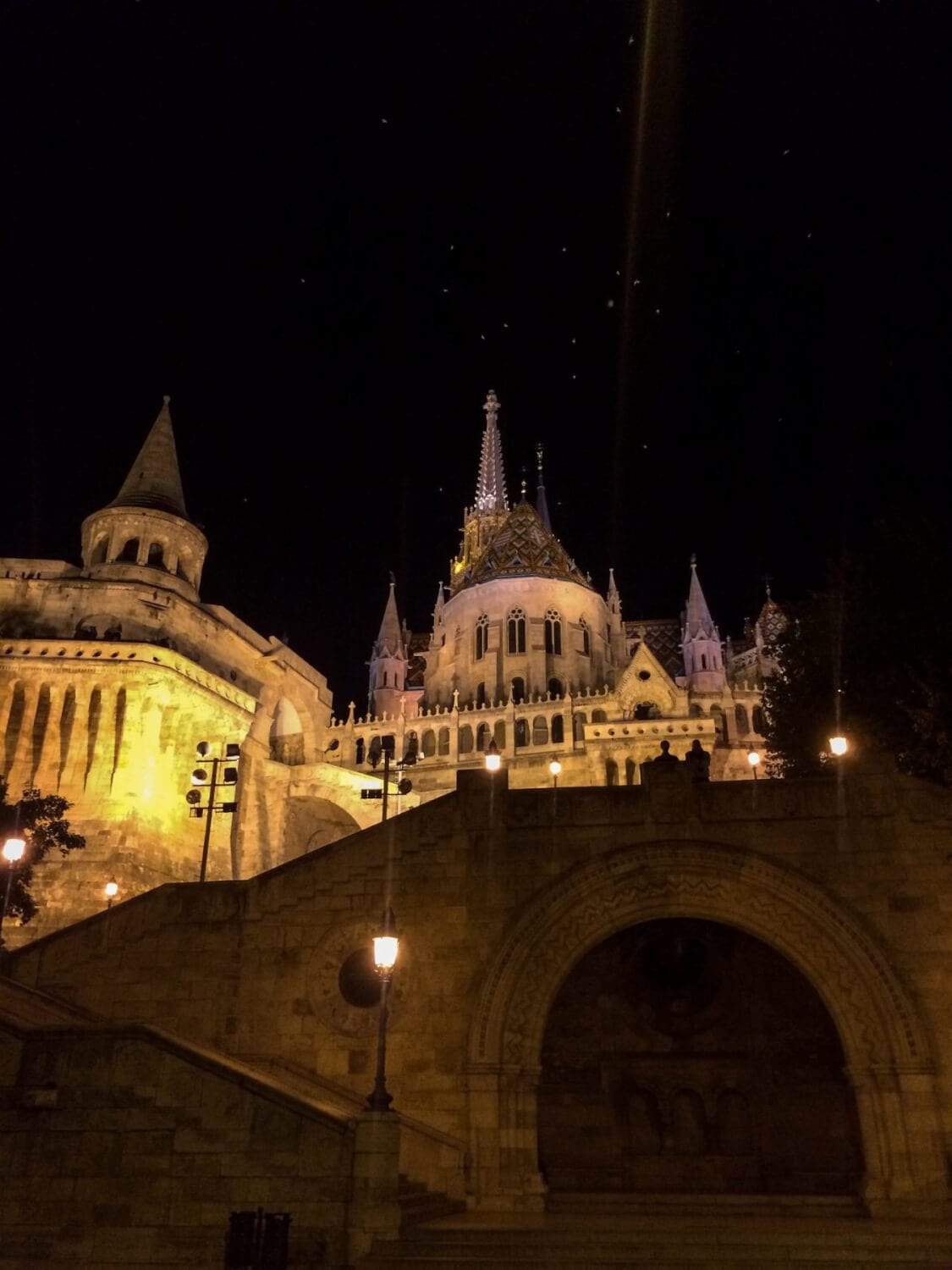The first place I wanted to visit in Dresden was the fabled “Green Vault”. The Green Vault or *Grünes Gewölbe* is Europe’s largest collection of precious, historical treasures. It was the first public museum in all of Europe featuring a collection of crown jewels, royal bowls carved out of crystal, agate and ivory, golden figurines with multicoloured gems inlaid within and the ‘Dresden Green’ – the largest green diamond in the world. When walking up to the Green Vault, I suppose you expect to see a big green building but in fact, the gallery got its name a different way. During it’s original construction, the columns and bases which held up the vaulted ceiling were all painted green – giving the entire place an Emerald city like vibe.
The Dresden Frauenkirche or Church of Our Lady in one of the grandest buildings in all of Europe, but it is its destruction, and reconstruction is to me, what makes this church stand out. The interior and overall design aren’t in my top ten but the story behind, literally, every stone, is one I will never forget.
Along the side of the Georgentor, is one of the unique and valuable sites in Dresden. You’ll walk by its dozens of times while visiting Dresden and I think it’s worth more than a quick glance and few photos. This is the Procession of Princes of Fürstenzug.
This beautiful, art nouveau building is one of Prague’s most beloved buildings. It was once the seat of the old Royal Court Palace but has since been transformed into what is known today as the Municipal House or Obecní dům. In 1485, the old Royal Court was abandoned with the dissolution of Bohemia, and it wasn’t until 1920 when the now Municipal House was built.
This building was always critical to the Catholic people of Dresden. After Augustus the II converted to the Protestant church, his son, seeing that the large Catholic population of his country needed a place of prayer, commission the construction of this church in 1738. Although like the rest of Dresden, the building was almost destroyed in WWII, the valuables such as the organ and altar pieces were saved and reintroduced into the restored church to bring together the original and restored church. The new church is built to the specs of the original using photography and first-hand experience to get all the details just right.
One of the best places to grab a bite to eat, enjoy people watching while being surrounded by one of the most beautiful views in Dresden, is at the Dresden Neumarkt. The Neumarkt is the cultural centre of the Dresden historical district. This area was mostly entirely destroyed in WWII during the same bombing runs that destroyed the Dresden Frauenkirche. After the war, during the communist era, the surrounding buildings were rebuilt in the socialist, realist style. This was not a favourite of the German people and after reunification these buildings were demolished and the reconstruction of the Neumarket to restore it to its original architectural style got underway.
Brühl’s Terrace, or Brühlsche Terrasse, also known as the “Balcony of Europe”. The area where the Terrace now stands is where the ancient old city ramparts were built in 1738. Once the Fort was no longer needed to protect the city from invaders, it was converted, by the King’s orders, into an outdoor garden and space for the citizens of the city.
The Porcelain Gallery is easy to find. It is right underneath the glockenspiel that rings in the Zwinger every hour. The bells on the outside are also made from the same famous porcelain that is on display inside the gallery.
The Mathematisch-Physikalischer Salon or Royal Cabinet of Mathematical and Physical Instruments contians within it a myriad of historic clock and various different scientific instruments. But the incredible part about this museum is that these items not only serve a functional purpose but also are some incredbily beautifully artistic creations to feast your eyes on.
The bridge was constructed in 1357 under the watchful eye of King Charles IV. The old bridge which connected the two parts of the city, built in 1158, was more than due for some repairs. It was severely damaged in a flood in 1342 which lead to its demolition and the construction of the new Charles Bridge, named after the King. The reason this bridge was always so important was that it connected the castle past of town to the city’s old town.
You can’t visit Prague without sampling their beer. It’s honestly such a HUGE part of their culture and cuisine. Every bar has their unique home brew as well as hundreds of other local varieties.
Every time I visit the Valley of the Sun I am consistently amazed by the enticing restaurants popping up all over the city. For anyone spending a few hours, a few days or even an extended vacation, here are some of my favourite joints to visit while enjoying the sunshine, desert views and Sonoran hospitality.
Anytime I’m travelling and staying somewhere for an extended period; I always try to stay in an Airbnb. There is something, not just about the way they feel, but where they are usually located. Airbnb’s, compared to hotels, are usually located outside of the tourist hub. Local neighbourhoods where you can suddenly feel at home. Instead of turning every corner and being faced with camera frenzied, travellers and “American” bars.
During our first visit to Barcelona, we stayed in the up and coming, trendy neighbourhood of ‘El Poble-sec’. We picked a colourful and quirky Airbnb for our lodgings. We hoofed our way up the six floors, barely managing our clunky bags up the narrow 19th-century staircase.
While on our honeymoon, we tried to book a special dinner in each destination throughout our European adventure. For the most part, we’re not the fanciest of diners. We love a great meal, but for us, that great meal doesn’t have to cost a fortune. Some of the best food I’ve ever had has been on the side of the road or off the back of a truck. But since it was our honeymoon, and we’d been gifted some money for a ‘Dinner by the Danube’ we went all out, and I booked us a table at Halaszbastya Restaurant.
During the cherry blossom season, when many people make the pilgrimage to Tokyo to witness this natural phenomenon, festival food stalls crowd the pathways around the temple. Off-season, there are only a few, run down stalls on site, selling traditional Japanese street food to locals and tourists alike.























